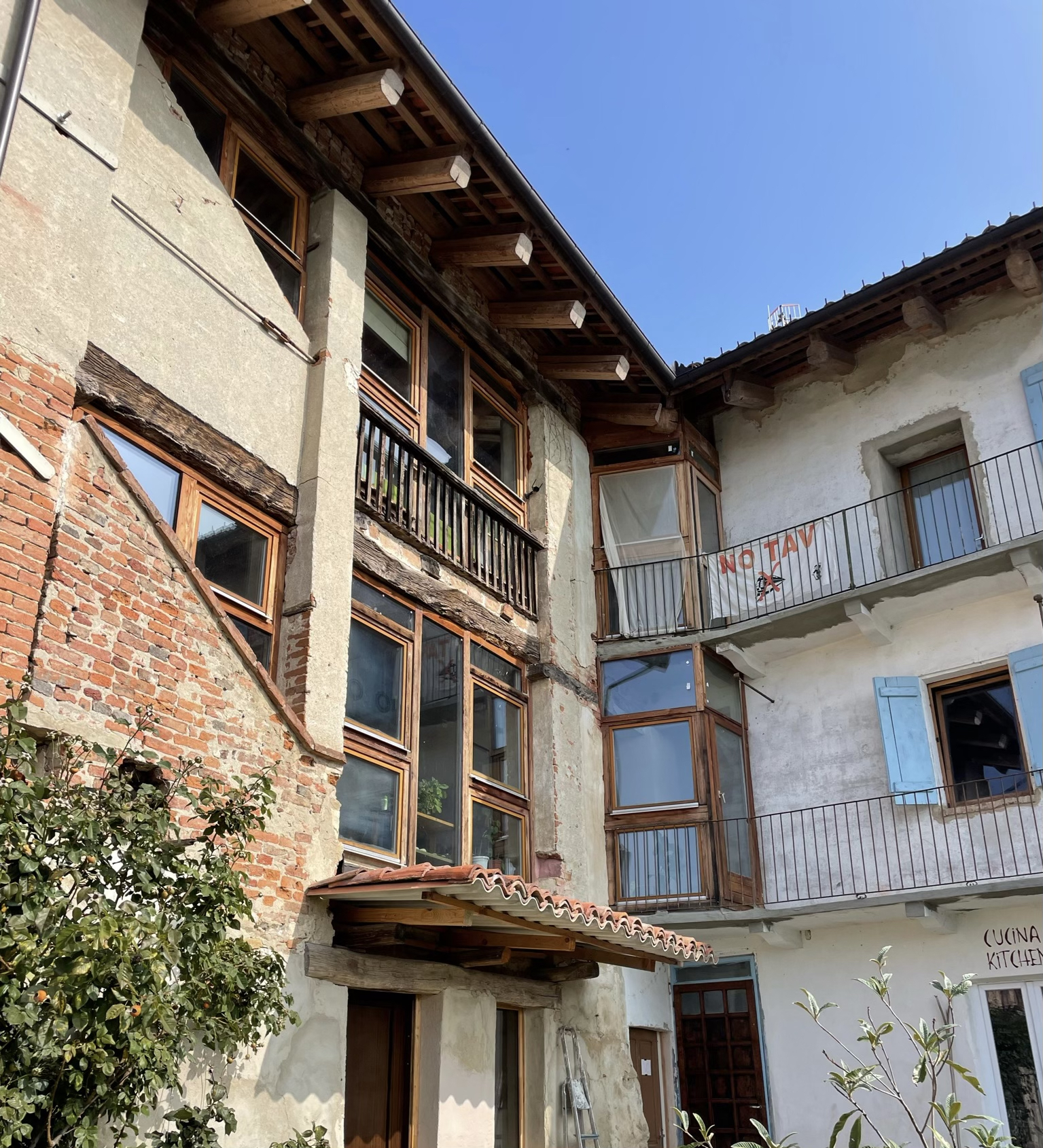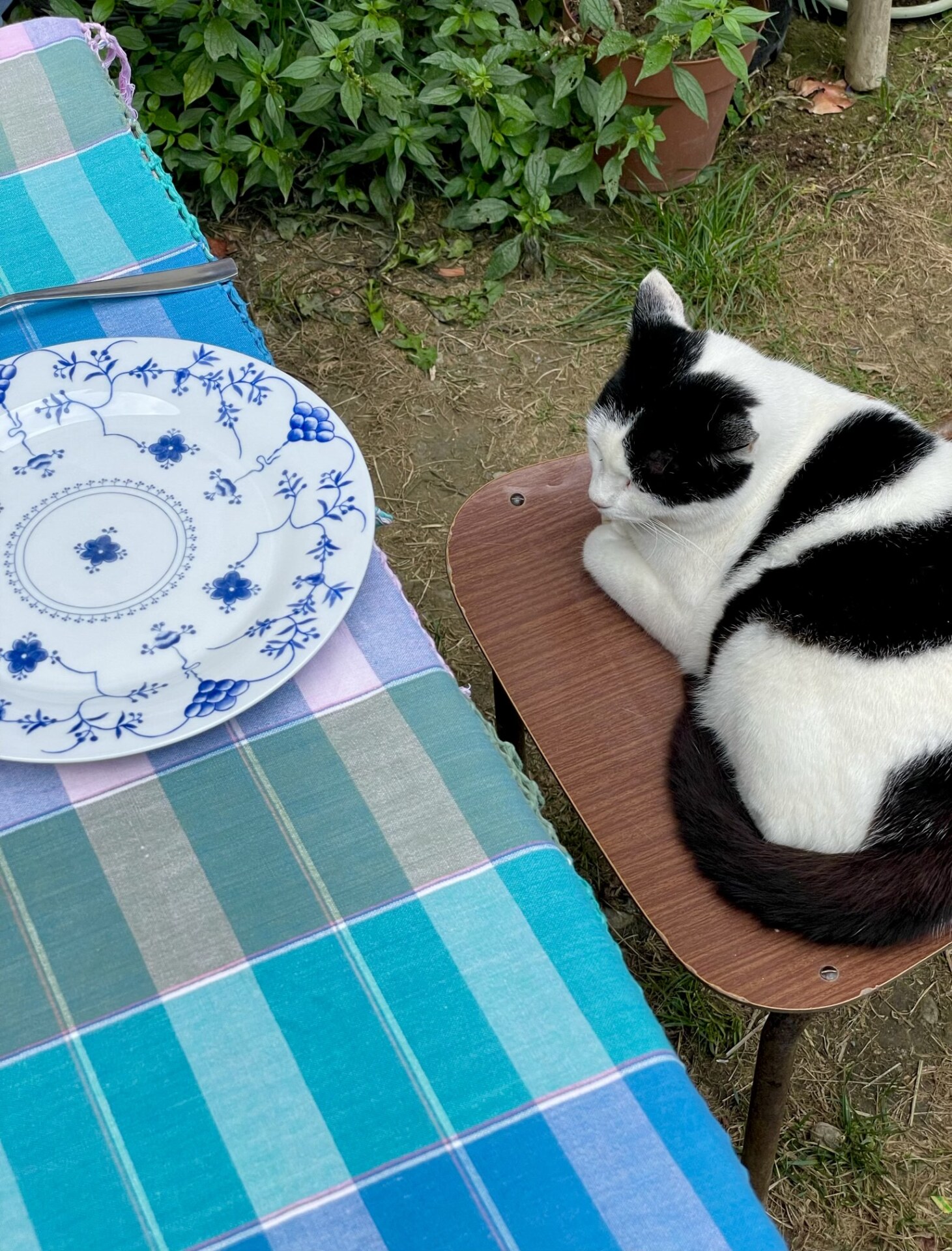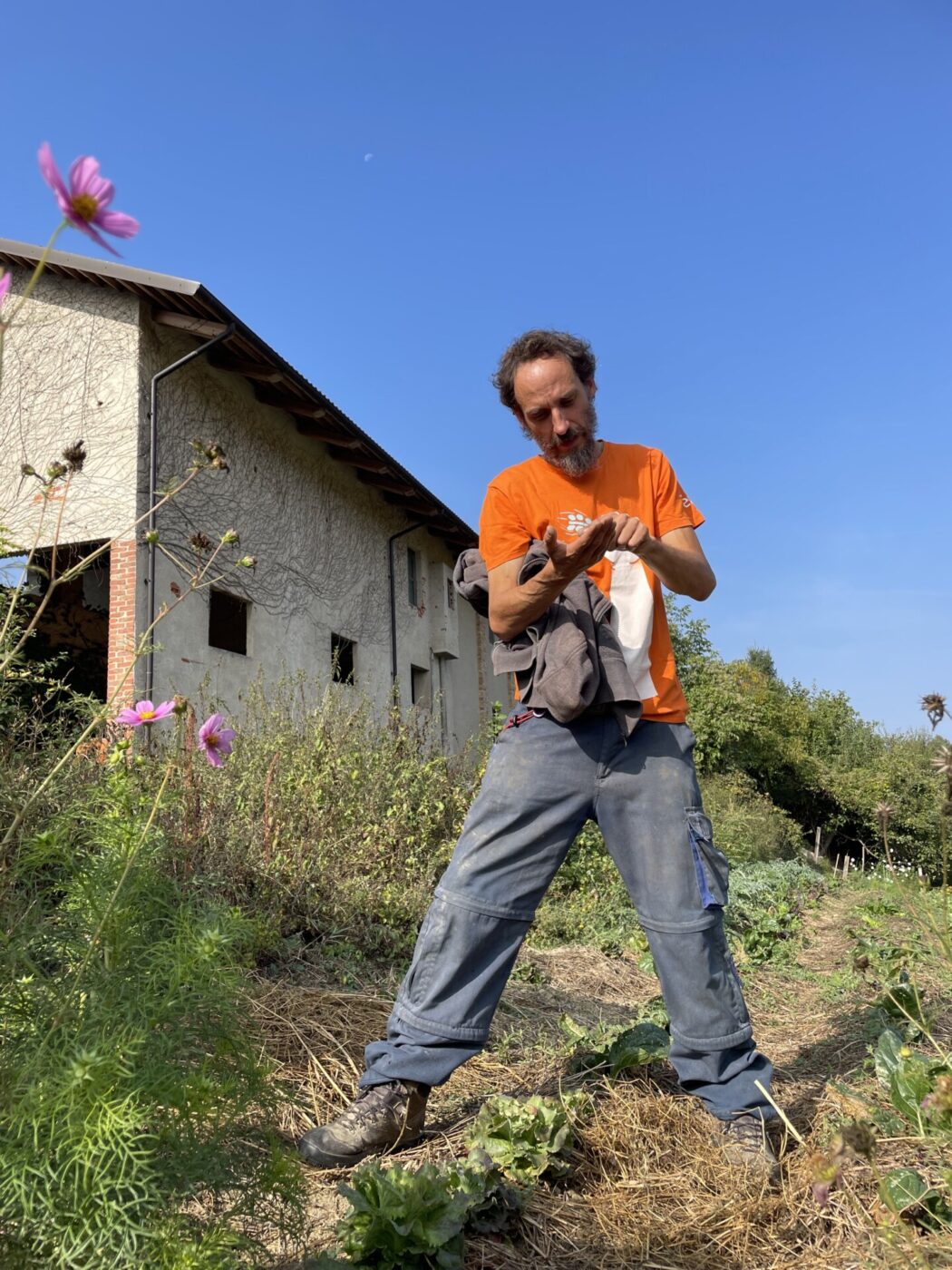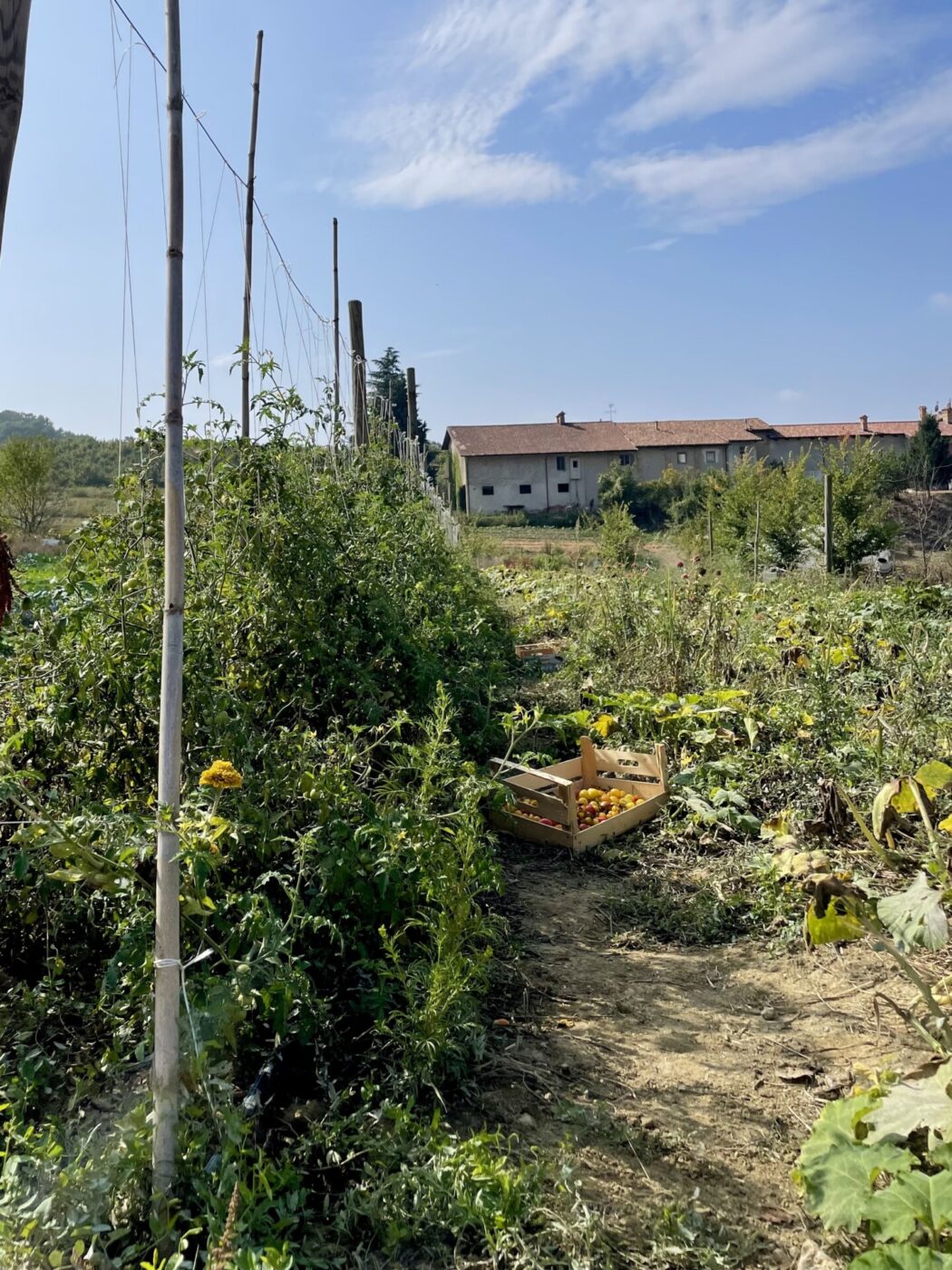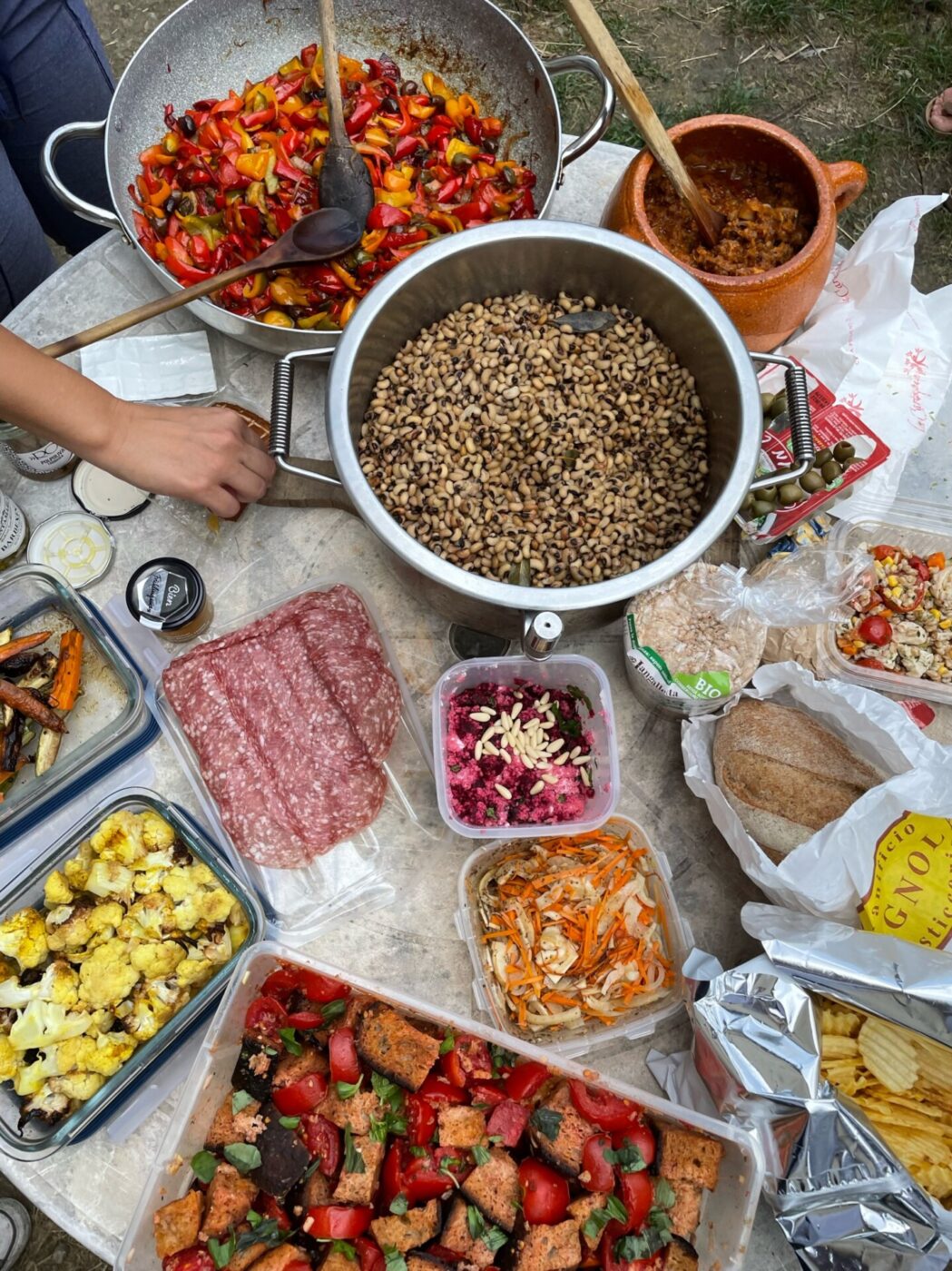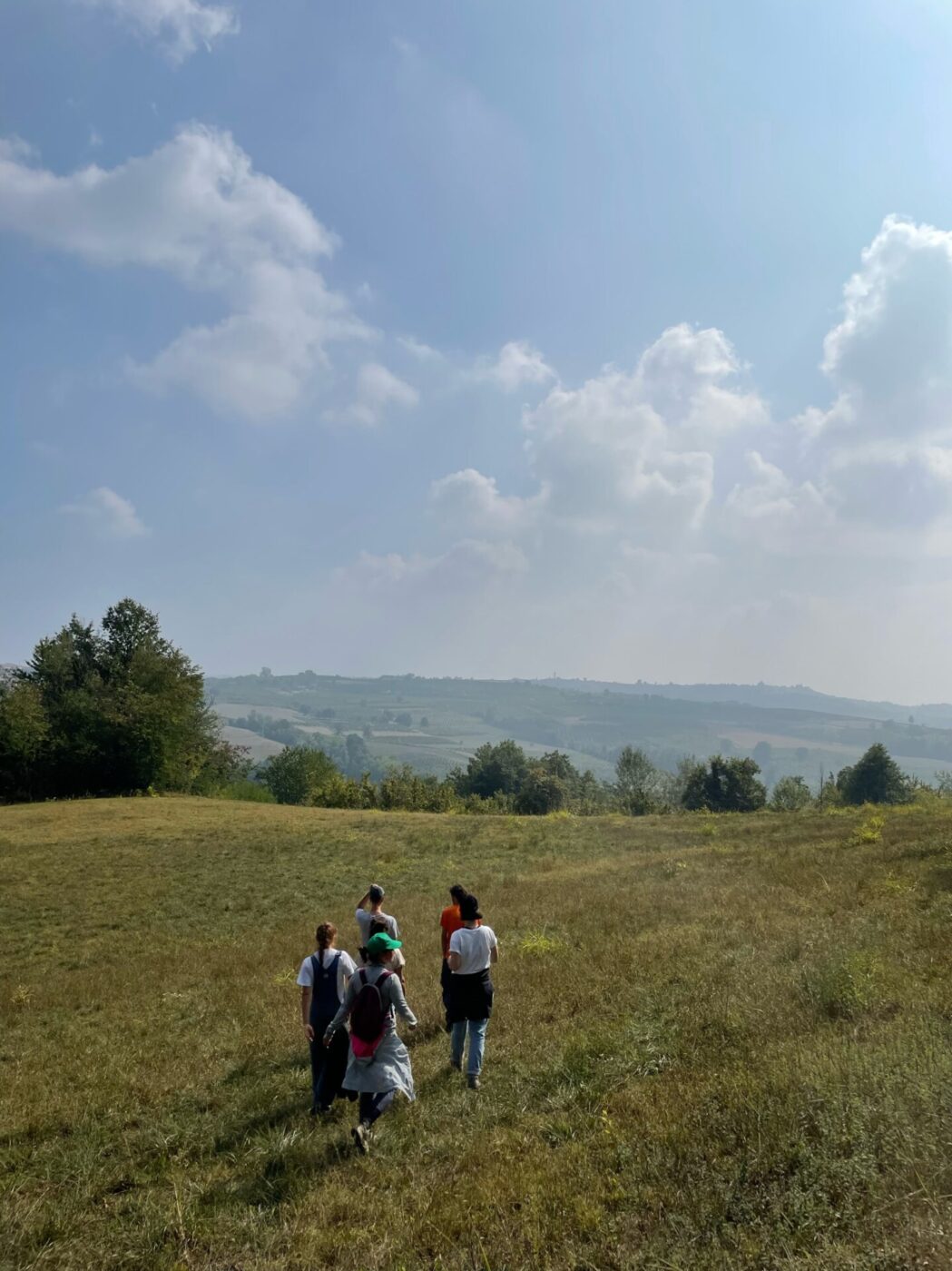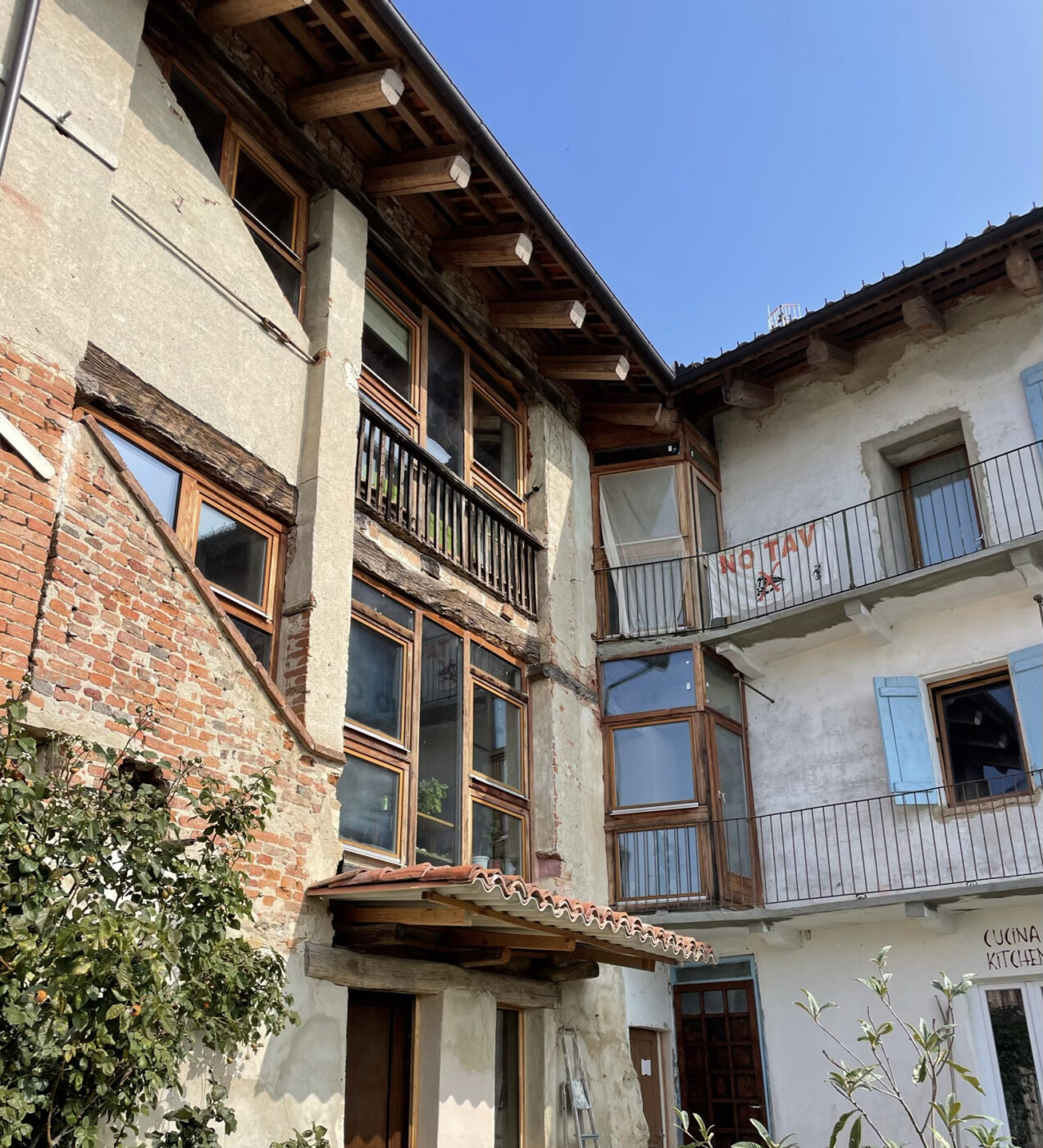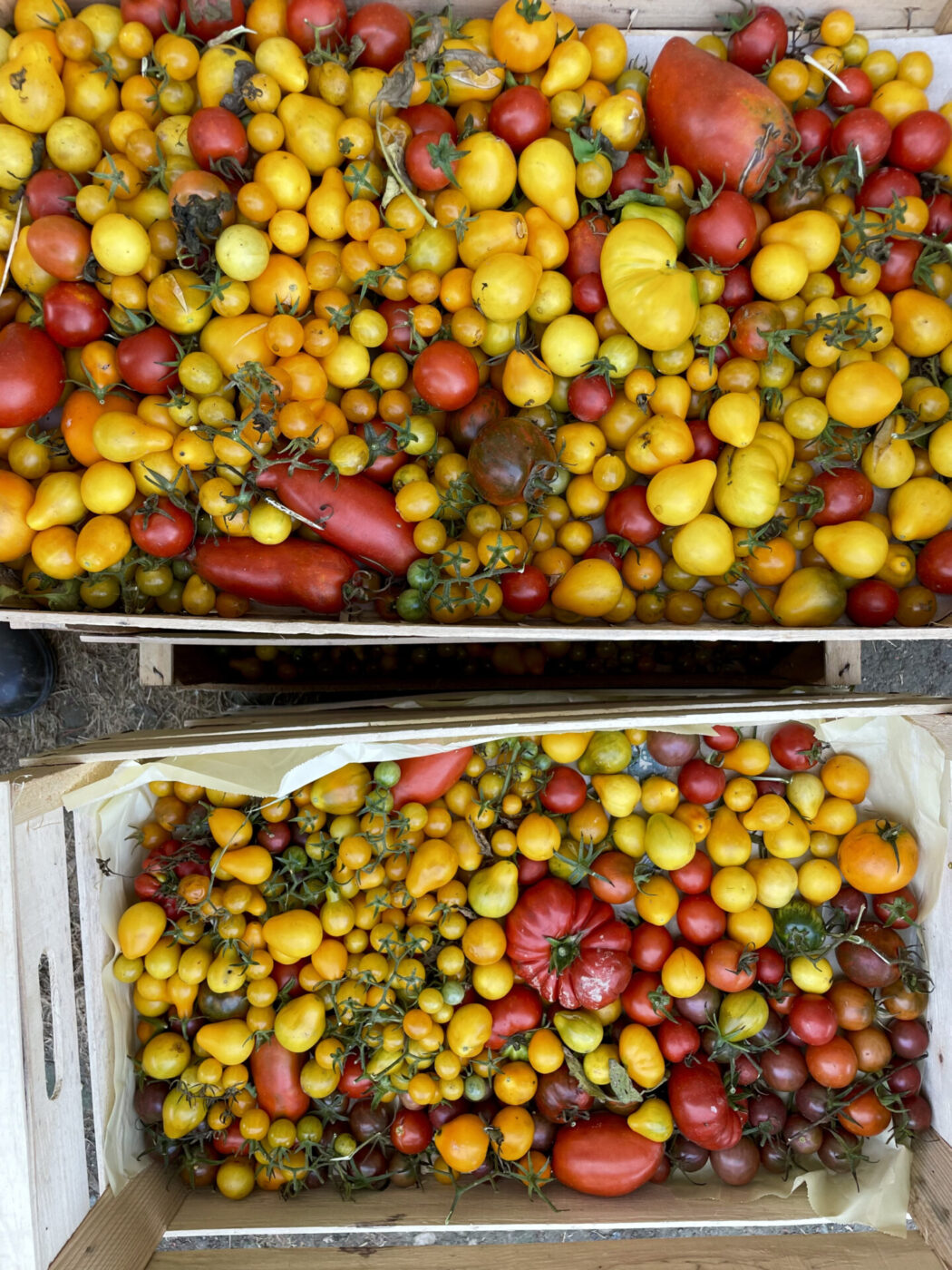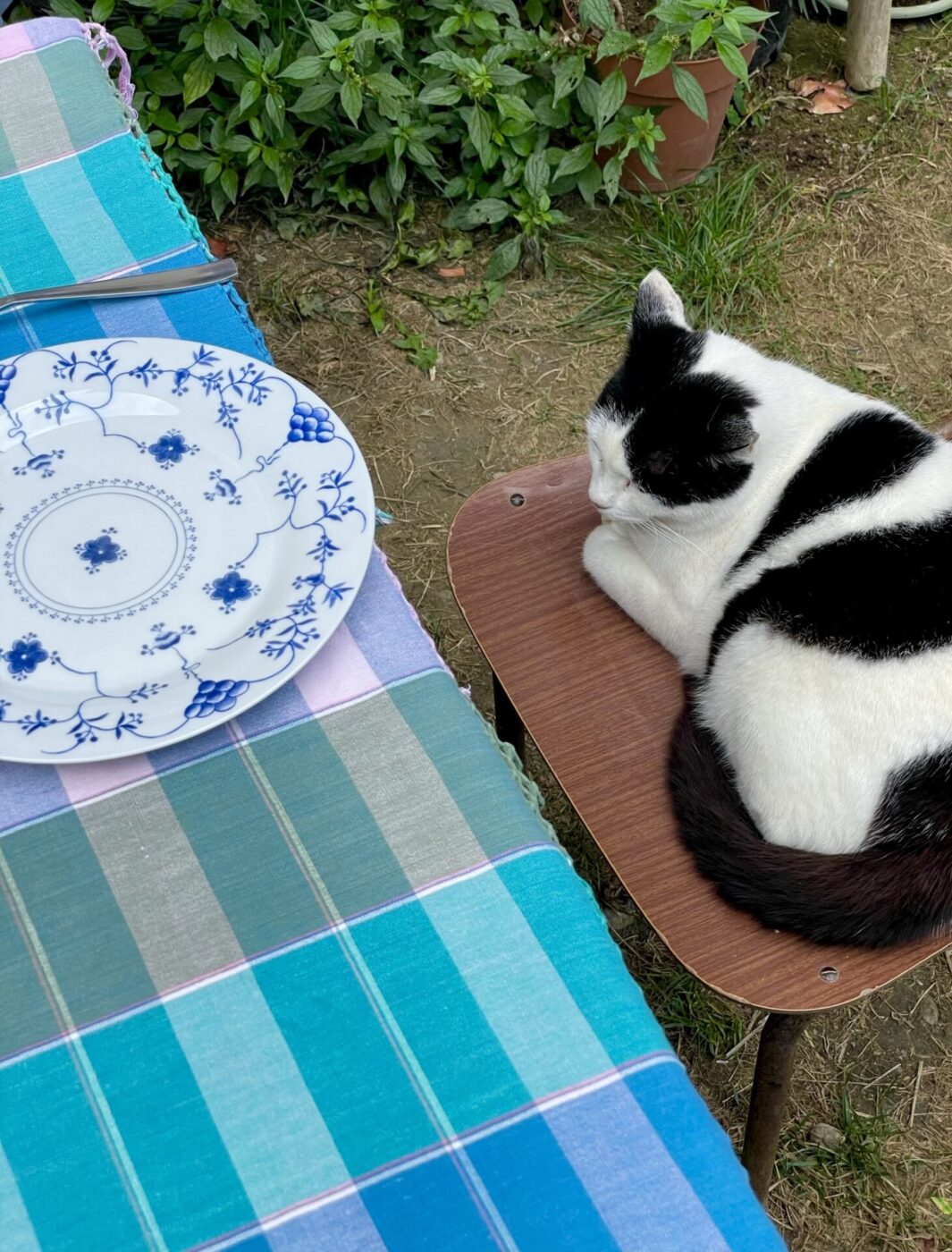In the dip of the valley in Piedmont’s Langhe lies the cascina and farmland belonging to the agricultural and living collective, La Casa Rotta, literally “the broken house”–though the spirit of this place is anything but broken. On a Monday afternoon in late September, when the air is warm and damp with humidity, they’re throwing a farewell party for Giorgio, one of their temporary residents. Trestle tables holding trays of food and stacks of plates are set up on a bank, the grass sticking up around the bare ankles of tanned feet strapped into clogs and sandals. A microphone is wedged into the earth, and colorful rugs, a drum, and a sign that reads “raccontateci una storia” (“tell us a story”) sit in front of it. People are chatting, singing, and drinking the beer they brewed themselves from grains they grow in the fields nearby. Their laundry is hung up on a line that runs along the bank, making a comical silhouette against the farmland behind it. In a place where nature has an outsized presence, these are people who have learned to live simply alongside it.
In the Langhe region, they call things as they are. Literally translated as “long hills”, the Langhe, with winding roads and steep inclines, makes for a less than pleasant drive, but this can be forgiven for the scenery as you pass. Swooping green hills decorated with the unmistakable neat green frills of the vineyards are bordered by the white tips of the Alps. “Piemonte” itself translates to foothill of the mountain, while Alba, perhaps the most famous town in the Langhe, is painted in the creams, yellows, and reds that recall its namesake, the sunrise. As these toponyms might suggest, the natural landscape dictates the visual, cultural, and commercial identity of the region. The economy here is based around agriculture and produce. Alba hosts a weekly farmers’ market where producers like La Casa Rotta sell their products. The now global “Slow Food” movement was born in Bra, just a few miles west of the town, while the world famous vineyards of Barbaresco and Barolo fill the valleys and lower foothills between the Langhe and the Alps.
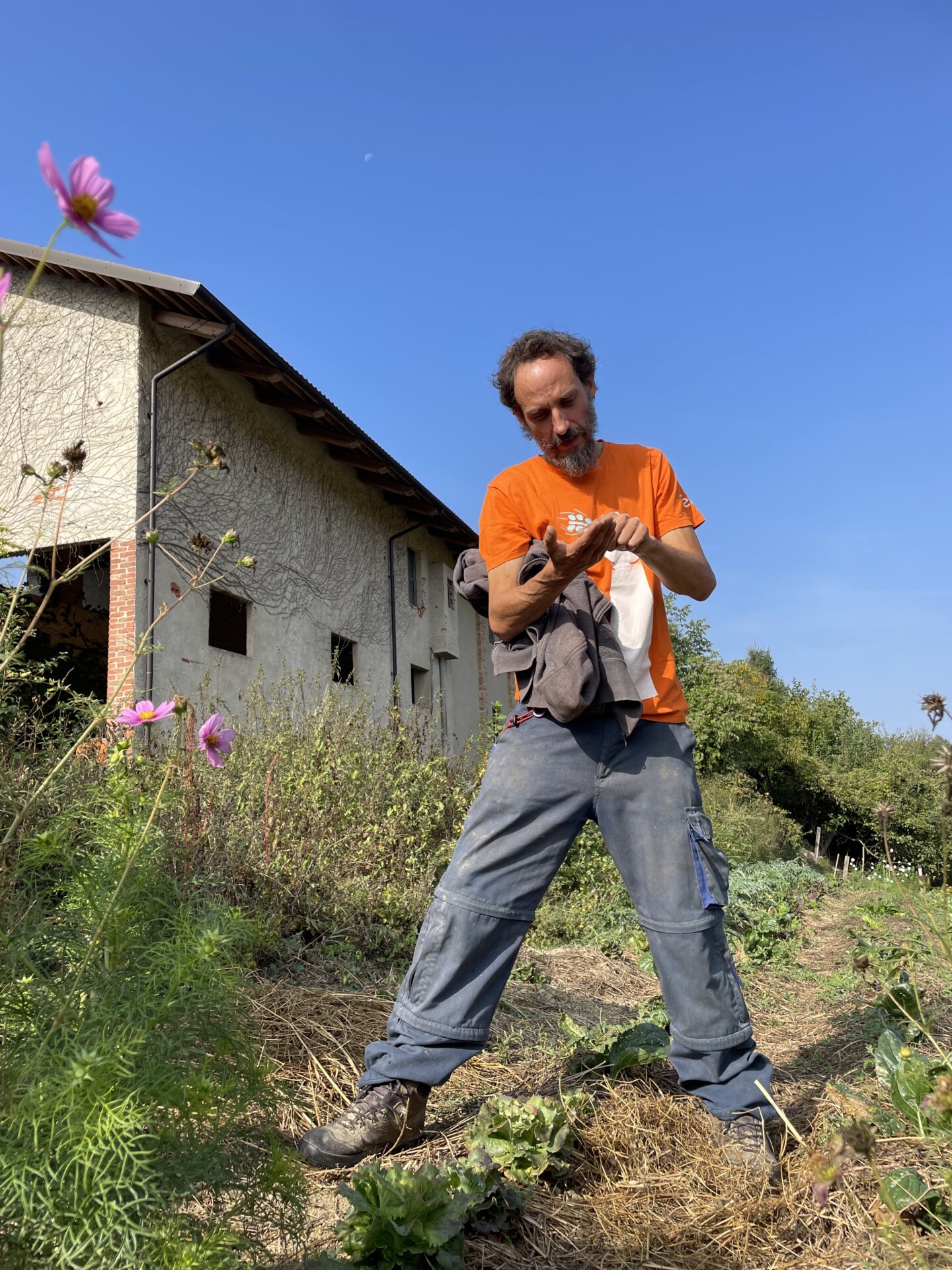
Stefano Vegetabile
Amongst the food innovators based here is Stefano Vegetabile, a farmer and agricultural consultant with a name just as fitting as that of the hills he calls home. In 2011, Stefano and his partner Ivana bought an old farmhouse with the aim of making good produce a way of life. They started with “lots of dreams and little money” but enough of both to buy the cascina and start building what he now refers to as an “ecovillaggio”. Gradually, thanks to a huge amount of donated materials and imagination, the broken house was fixed. La Casa Rotta kept its name, however, and now refers to the agricultural association that comprises the original cascina, two other farmhouses, a biodynamic farm named Nuove Rotte (meaning “new routes”), and its 24 acres of land. La Casa Rotta grew and its residents, initially family and friends of Stefano, have expanded to include visitors and volunteers from Italy and abroad who want to share in their lifestyle. They live together as a collective, sharing the workload and income by paying each resident a wage according to the work they carry out. A long-term goal of Stefano’s is to make his business model economically sustainable enough to be replicated. When he started, projects like his were rare, but in recent years, agricultural organizations and nonprofits have established projects with a similar air across the country, from Germinale in the Valle Stura to Libera Terra, a non-profit which repurposes land previously controlled by the mafia to be used for sustainable farming.
Before their arrival, the land surrounding La Casa Rotta had been used to grow peaches, a local delicacy often served stuffed with amaretti biscuits and roasted until jammy. But the quality of the land had been depleted by modern farming techniques: chemical pesticides and fertilizers had damaged the soil and left it lacking essential minerals. Stefano’s vision was to bring the land back to health through a combination of modern knowledge and ancient methods. To do so, he took inspiration from the model of a pre-industrial revolution Piemontese family, who would own a small plot of land and farm it themselves. This meant creating the perfect conditions for produce to grow without artificial or chemical assistance, prioritizing the quality of the produce over the quantity. Instead of using insecticides, Stefano planted a variety of flora which attracted these insects’ natural predators; instead of fertilizers, Stefano studied the leaves and charted the dimensions of the plants in order to place each according to their response to sunlight.
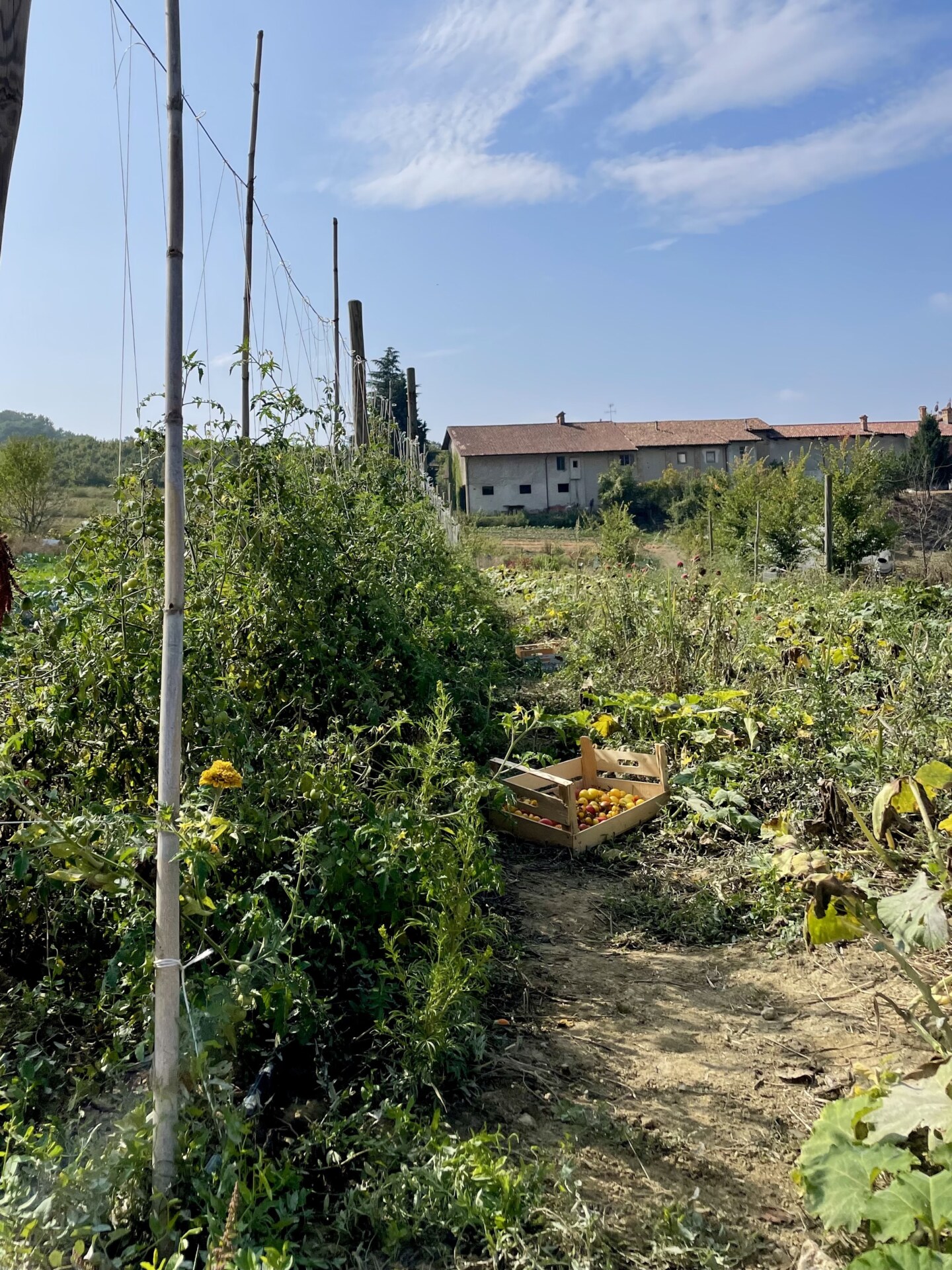
This ecological paradise could not be complete, however, without wheat, essential for the gastronomic identity of the region (and of Italy, for that matter). Modern wheat is shorter in the stem than ancient varieties, an unfortunate evolutionary consequence that causes stress on the plant, resulting in a higher gluten content. Stefano and his team, instead, were preferential to more stress-resistant and digestible ancient strains: the collective reached out to local farmers who had inherited centuries of farming knowledge, went looking across Italy–from Puglia to Alessandria–and collaborated with universities of gastronomy and agriculture. Eventually, they discovered that, by selecting varieties that had undergone minimal hybridisation and planting them together, a kind of natural selection occurred in which the varieties that were able to adapt to modern climates thrived, beginning a process of auto-hybridisation and adapting to the modern environment in which they were growing. This resulted in a crop that had the genetic advantages of older strains, lower in gluten and therefore easier to digest, but with the resilience to grow in the modern ecological climate. Aside from its quality, the grain produced by Nuove Rotte may not cause the same irritation that modern grain appears to. Stefano tells me that people who experience milder levels of intolerance to gluten have eaten their flour products without any problem. The health benefits of ancient grain and pre-industrial farming techniques point to correlations between the modernisation of the agriculture industry and a rise in food intolerances. The positive health implications of a de-industrialisation, like that which Stefano has carried out, could be vast.
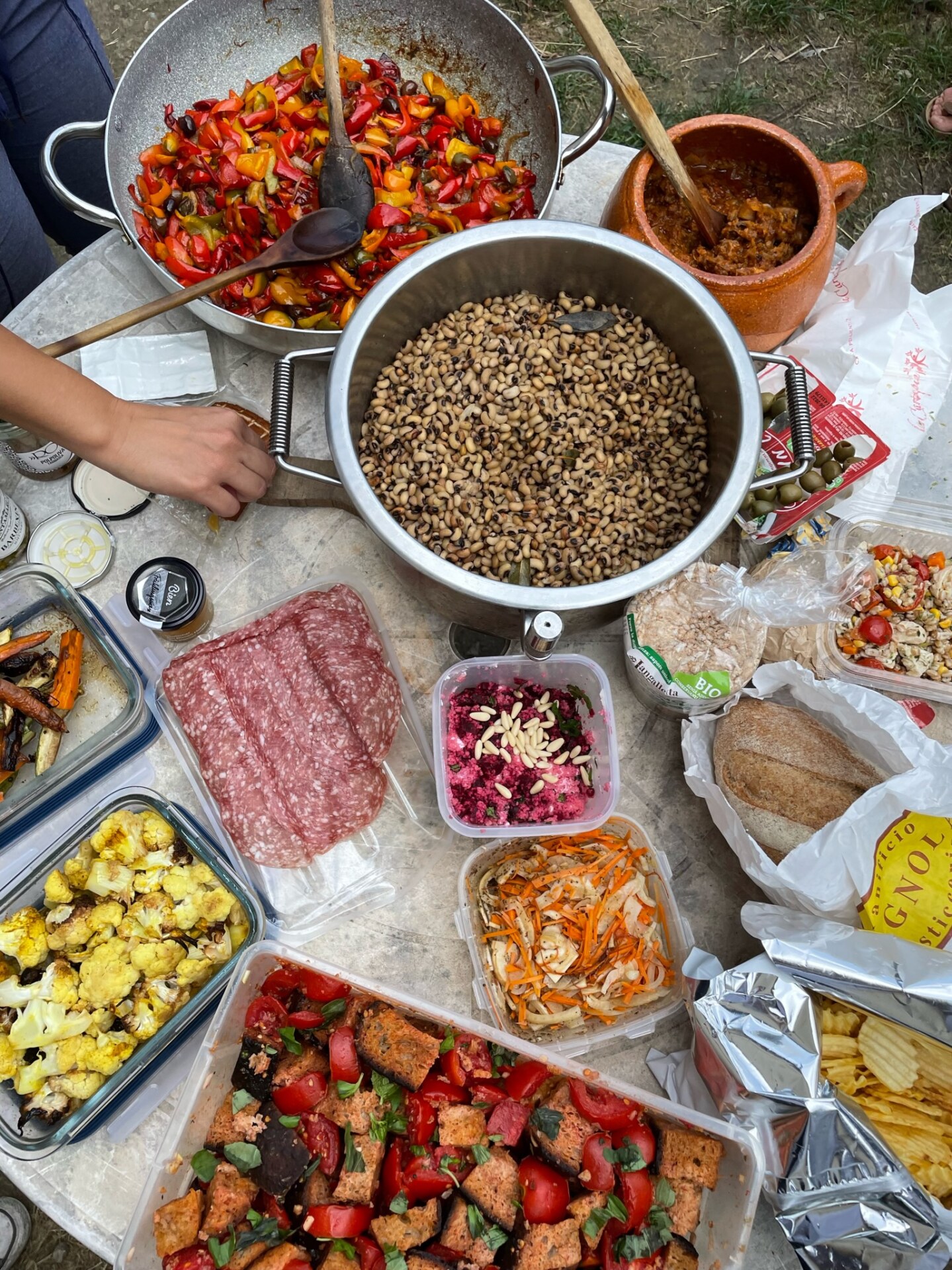
As the farm developed and their community expanded, Stefano and Ivana gradually learnt the right balance of structure and freedom to allow the collective to function both as a home and as a business. In fact, home and business often meet: the community once recycled an old armchair into a planter for the farm by hollowing out the seat and filling it with soil. While home life and business may overlap, the houses themselves are autonomous, if still part of a whole. They are divided by lifestyle choices in such a way as to facilitate communal living–those who are vegan live together, as do those who are more spiritual–and there is an emphasis on transparency to avoid conflict or misunderstanding. Allowing for differences in opinion and individual growth is paramount, especially since the collective counts children among its ranks. Seeing them together as a group, it’s hard to distinguish who is related to whom. The children, long brown hair whipping around their waists, run amongst the other residents, who are a mixture of people of all ages and backgrounds, but the children interact with everyone with the playfulness and ease of family. With recent discourse circling the loneliness and disconnection that’s come with the culture of remote working, it’s easy to see how collective communities like La Casa Rotta solve these current-age problems, offering an alternative lifestyle that prioritizes human connection.
La Casa Rotta is not nuclear, and, as they depend on each other, they depend on an extended network of friends in biodynamic agriculture to achieve full circularity. Produce swaps allow a diverse range of foodstuffs to be available. “We have total faith in what we eat…it’s good to be able to say: this is Arianna’s cheese; Matteo made this wine,” Stefano says. “It’s as if you were in communion with that person, eating together even if they’re not there in that moment.”
For Stefano, being close to the natural world and working alongside it is what gives life meaning. Coming from a farming background himself, he has a desire to prove that there are different and better ways of growing food. Stefano’s philosophy is simple: a plant is a living being, and will do best when treated as such and given the conditions in which it can thrive. This same philosophy applies to the residents of La Casa Rotta.

